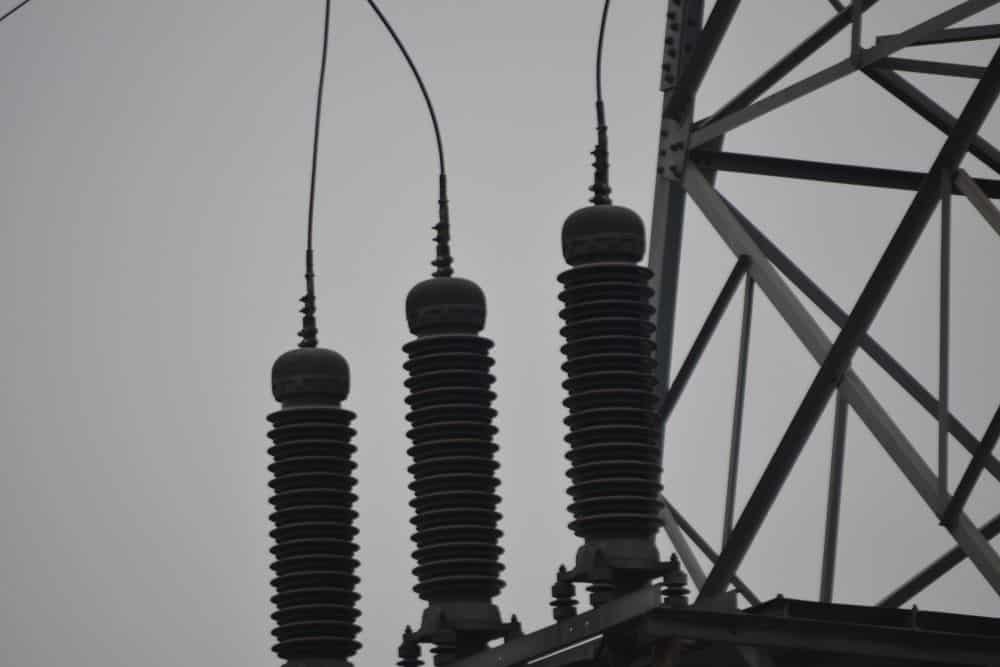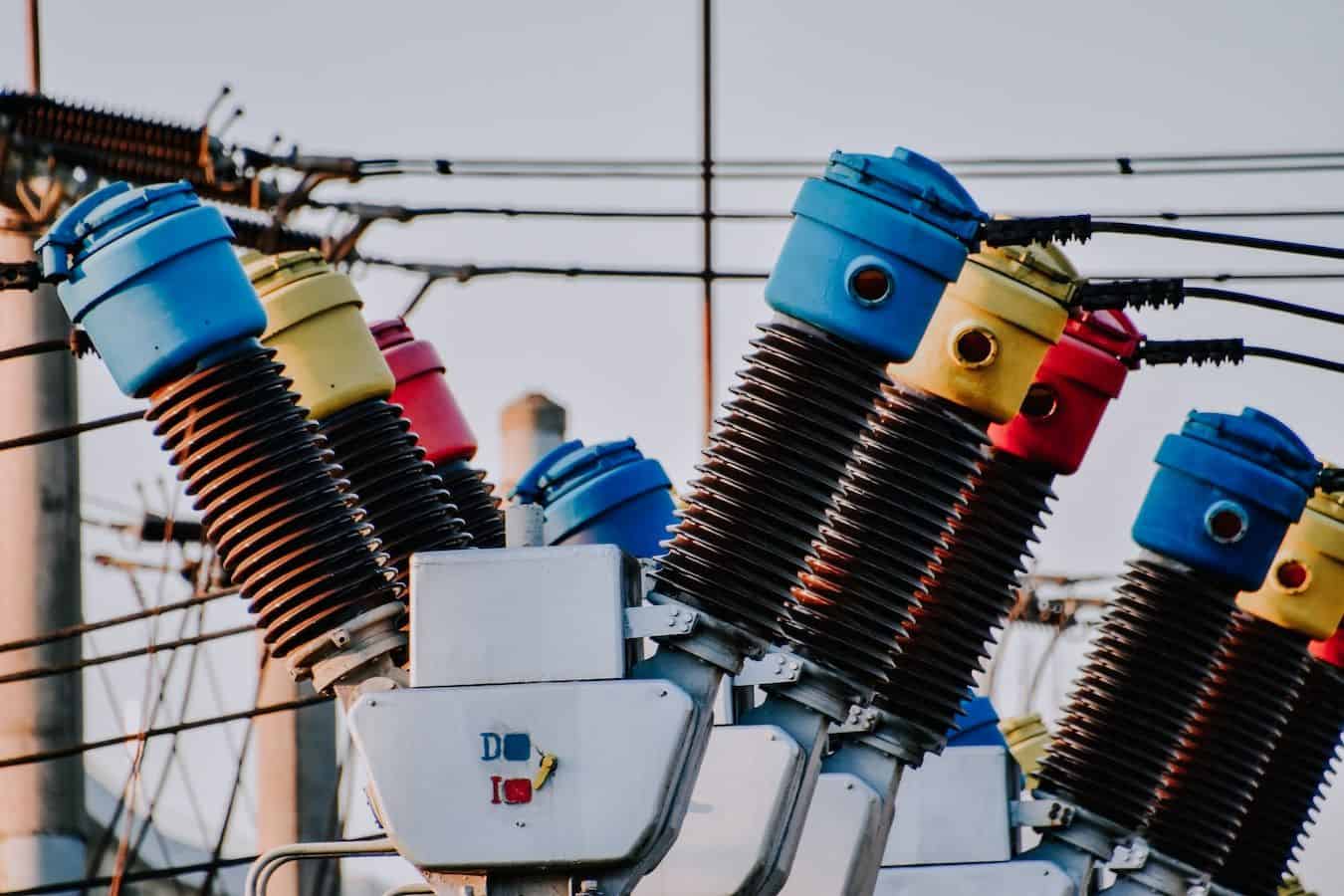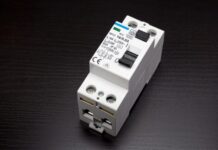Some people might have wondered, “What is an insulator?” and “How does it function?” after hearing the word “insulator” mentioned one or more times.
You have come to the correct place if this accurately describes you. I will cover all the information about insulators that I believe you should be aware of in this piece.
Don’t miss a thing, because I have also added a tiny bonus that you might find interesting. So without further ado, settle in, and let’s begin.
What Is An Insulator? – Overview

An insulator is a material or substance capable of resisting the flow of current (electricity), heat, and even sound going through it.
It blocks the flow of both thermal and electric current.
Insulators are good protectors. They can protect against heat, sound, and the flow of electricity through a system.
You may have experienced electric shock when you came in contact with household appliances having metal surfaces. However, you may have never gotten such an experience with wood, glass, or rubber materials.
This is so because metals are conductors, and as such, allow the flow of electricity through them – contrary to insulators.
Moreso, the electric shock you got was just the flow of current passing through your body. Note also that apart from metals, there are other conductors like earth, animals, and even humans.
In real fact, your body is a conductor. It creates allowances for current to flow freely from the source (which could be an electric wire) to you.
So, if you have recently experienced an electric shock, I bet you now have an idea why and how that happened.
Without wasting your precious time, let us look at the examples of insulators.
What Is An Insulator?: Examples Of Insulators

Basically, non-metals are insulators. Some of them include:
- Wood
- Glass
- Plastic
- Rubber
- Cloth
- Quartz
This explains why these materials are used to cover other materials that carry current (electricity). An example is the plastic covering on wires which helps prevent the flow of current to areas where it is not needed.
Another example is the plastic handles on metal cooking utensils. Being heat resistant, they prevent you from getting burnt when you touch them when they are hot.
I believe at this point, you understand that an insulator is any material preventing the flow of current (electricity), heat or sound from one area to another.
With that out of the way, I will be talking about the types of insulators and how each of them works and are used
What Is An Insulator?: Types

There are three types of insulators, namely:
- Electrical Insulators
- Thermal Insulators, and
- Sound or Acoustic Insulators
Let us look at the details of them each.
What is an Insulator?: Electrical Insulators
xxxxxTalking of electrical insulators, are materials that prevent the flow of electric current to unwanted areas. They do not allow the electric current to flow freely through them.
- Post Insulators are perfect for varying levels of voltage and are known for their excellent mechanical strength.
Uses and Applications of Electrical Insulators
There are great uses for electrical insulators in our homes, offices, streets, etc. Electrical insulators are important because they are used for the following:
- They are used in circuit boards and high-voltage systems to prevent electrical devices from getting damaged.
- Electrical insulators are also used in coating electric wire and cables. This is known as insulation or insulated wire.
- This coating prevents wires or cables in close contact from short-circuiting. It also prevents cross-connections and fire mishaps.
- These types of insulators reduce energy costs and control the emission of pollutants.
- Electrical insulators enhance the performance of electrical appliances.
- Give protection against electrocution.
What Is An Insulator: How Does Electrical Insulator Work
In summary, electric Insulators are applied in the following areas:
- Circuit boards
- Coating of electric wires
- High voltage systems
- Coating of electric poles in the streets
What Is An Insulator? Thermal Insulator
While electrical insulators prevent the flow of electric currents, thermal insulators prevent the movement of heat from one area to another. A thermal insulator is a material that blocks conduction.
Heat always moves from a place of more heat to a place of less heat. This is known as conduction (one of the ways heat travels).
When two close objects are at different temperatures, energy is transferred from the hotter to the cooler until they both reach the same temperature.
Thermal insulators, however, reduce the rate at which this energy is transferred.
In areas where people experience extreme cold, thermal insulation is required to keep heat trapped indoors rather than escaping into the outdoors.
Materials that get rid of thermal conduction are what we call thermal insulators. They reduce how much thermal energy travels easily.
Thermal energy is able to easily travel in materials that conduct electricity, like metals. So, to prevent thermal conduction you may want to avoid metals.
The best thermal insulators are nonmetals. Gases such as air are also good thermal insulators because they have low thermal conductivity.
Types Of Thermal Insulators
The most common thermal insulation materials are polyurethane foam and mineral wool. Cellulose, fiberglass, and polystyrene
Fiberglass is the most common type of thermal insulation you will find there. This type of insulator is made out of fine strands of silicon glass, spun into a mat, and bound together.
It has a high resistance and, therefore, is very effective at preventing heat transfer. It is also non-flammable and a cheap option.
You will need to be careful working with this though, as it may cause skin irritation and damage to the lungs and eyes.
However, you should be just fine if you have the appropriate safety equipment worn.
Mineral Wool comes in several varieties. It could be glass wool also known as fiberglass made from recycled glass.
Moreover, rock wool that is is made from basalt, is also in the family of mineral wool. Finally, it could be slag wool, produced from the slag from steel mills.
However, mineral wool doesn’t have the necessary components to make it fire-resistant, and it’s a poor choice for areas with extreme heat.
It isn’t flammable, though, and if used together with other fire-resistant forms of insulation, mineral wool can be a productive way to insulate large areas.
Cellulose is made from recycled paper, making it an eco-friendly insulation choice. The compact nature of this material creates little or no space for oxygen.
With less oxygen present, the flammability is reduced, thereby, minimizing the chances of fire mishaps.
So, cellulose is both an eco-friendly and fire-resistant form of insulation. It is also another cheap form of insulation.
Polystyrene is a waterproof thermoplastic foam that is both efficient for sound and temperature insulation. The smooth surface of this material sets it uniquely apart from other forms of insulation.
Polystyrene can be used for both residential and commercial purposes. It is the ideal choice when looking out for wall insulation.
However, polystyrene foam is flammable, thus, it should be coated in a fireproofing chemical known as Hexabromocyclododecane (HBCD for short please).
Polyurethane Foam has different types, but in this article, I’ll only talk about the spray types.
They are made by mixing chemicals. These chemicals react quickly and expand on contact in order to create a foam when sprayed in areas needing insulation.
Polyurethane foam is a very good form of insulation, able to fill up even small gaps, leaving no open spaces. They are fire-resistant too.
Uses And Application Of Thermal Insulators
Thermal insulators are mainly used in the following ways;
- They are used by building industries to reduce heat loss or gain in a house
- Thermal insulators create thermal comfort by keeping the temperature in houses under suitable conditions
- They create a barrier between the warm air inside the house and the cold air outside
- Generally, they reduce energy consumption
What Is An Insulator?: Sound Or Acoustic Insulators
This is the third and last type of insulator.
Sound or acoustic insulators prevent the transmission of sound from one area to another. Sound, as you may know, are vibrations traveling through the air until they reach the ears and can be heard.
So, what acoustic insulators do is stop these vibrations from reaching our ears. When these vibrations or sound waves hit a surface, they are either reflected or absorbed.
Surfaces that are hard and smooth are most likely to reflect sound; this is how you get into a noisy environment. On the other hand, materials that can absorb these vibrations will create a quiet environment.
Thick materials that are difficult to move like concrete can dampen the vibrations reaching the ears.
Other materials capable of absorbing these vibrations include rubber or silicon. They allow only fewer vibrations to reach the ears.
Sound insulators are quite useful, especially, if you live in noisy areas. Musicians may also find sound or acoustic insulators useful during recording or practice.
A comfortable level of noise is acceptable and a normal part of everyday life. Excessive and unwanted noise, on the other hand, can create a lot of problems like anxiety, stress, and high blood pressure.
This is why sound and acoustic insulation is important as it is the most productive way to reduce unwanted noise and create a peaceful environment.
Types Of Sound Or Acoustic Insulators
The type of sound or acoustic insulation people opt for depends on their sound, needs, and issues. The basic sound issues are transmission and reflection.
Sound transmission is simply how vibrations travel in and out of a room through the walls, floors, or ceilings.
Sound reflection, on the other hand, describes how vibration bounces off a hard surface and echoes within a room.
Whatever the issues, soundproofing insulation will surely address it. Soundproofing insulation offers both acoustic benefits and heat insulation.
It absorbs sound by converting it into heat. This explains why some of the thermal insulators discussed earlier, make for good sound insulators as well.
These materials as mentioned earlier are:
- Mineral Wool
- Fiberglass: This is the most widely used insulating material in the world. It is available in forms like acoustic batts, sound control batts, acoustic wall batts, etc.
- Cotton: This is the lightest and most affordable form of sound insulation. It offers high sound-absorbing abilities.
It is able to trap sound coming from different angles. It is also safe for sensitive skin, compared to mineral wool or fiberglass.
- Polyethylene: This is used for building soundproof floors. It is a strong and cheap plastic that is moisture-resistant.
Other Types of Sound Insulations include:
- Polyester Acoustic Insulation Products: This is a flexible, non-toxic, fibrous material with high density and is water resistant.
It makes for one of the most versatile materials that can be used in making fibrous sound-absorbing products.
Polyester Acoustic Insulation provides a high-quality soundproofing solution used for both residential and commercial purposes.
It comes in forms like sound blankets, panels, batts, ceiling batts, etc.
- Mass Loaded Vinyl (MLV): these are sound barriers that block the transmission of vibrations by increasing the mass of a structure.
This makes it difficult for sound to pass through. It comes in the form of rolls for use in ceilings, walls, under floors, and industrial applications.
Uses and Applications of Sound or Acoustic Insulators
Sound insulators are useful and applicable in the following areas:
- Noise Reduction: This helps reduce noise to safe and manageable levels, especially in manufacturing industries where big, noisy machines are used.
- Noise Absorption: it helps absorb sound created by movement in indoor spaces.
Walls and floors may have acoustic or sound insulation to help absorb the noise of movements between floors and the noise from room to room.
- Dampen Vibrations: help dampen vibrations, especially the ones caused by machines and appliances that create deep sound vibrations and other machine-related sounds.
- Reflect Vibrations: sound or acoustic insulation can reflect vibrations in the air and redirect those to other areas.
I think it’s safe to say that we have covered everything important that you should know about an insulator; what it is, the types, and how it works.
The time has finally arrived to reveal what was promised at the start of this article. The small bonus I spoke of is a list of a few recommendations on thermal and acoustic insulation products.
I decided to do this just in case you’re thinking about getting one or just simply curious at this point, after digesting everything “insulator”.
Now, the list in no particular order
My Recommendations On Thermal and Acoustic Insulation Products.

Insulation MarketPlace SmartSHIELD ReflectiveINSULATION Roll
This is a perfect radiant barrier that is unaffected by humidity and moisture. It can be used both indoors and outdoors.
It is lightweight and provides both heat and sound resistance. This product is quite effective in deadening or blocking sound waves.
It is made from polyethylene foam, placed in between highly reflective engineered foil. It is non-toxic and will not irritate the skin or eyes.
You can place this product on ceilings, walls, steel buildings, etc.
LINGDA Car Heat Shield Thermal Sound Insulation Mat
If you are interested in getting thermal and acoustic insulation for your car, then this is a good option. This insulator is recommended for hood insulation.
It is made from high-quality materials – premium aluminum foil, strong self-adhesive, and high-density cell foam – and is effective in noise reduction and heat insulation. It is also waterproof.
Asides from the underhood of your car, you can also place this product on your car’s exterior bulkhead, engine compartment, boot, body panels, under the seat, etc. It is also ideal for underfloor applications due to its great load resistance properties.
Home Intuition Ceramic Fiber Insulation Blanket Sheet
Ceramic fiber insulation is energy efficient, flexible, and is more convenient and safer to install compared to traditional fiberglass. Due to its high chemical stability, it is durable and will not break down over time.
The insulated sheets have a rating of 2500 degrees Fahrenheit which makes them suitable for both home and commercial settings.
This product has a low thermal conductivity, reducing heat loss and helping prevent fire mishaps.
The high density of these insulation sheets makes them very useful for insulating household appliances like dishwashers, stoves, fridges, freezers, etc., which help protect the walls, cabinets, and pipes in your home.
It also helps reduce noise, caused especially by rattling and thermal expansion. One of the best things about this product is that it’s easy to set up and use whenever and wherever – you don’t need to be an expert.
BXI Soundproofing Closed Cell Foam
This product is effective for noise reduction, and sound absorption and also provides thermal insulation.
It is able to block and reduce noise, absorb sound energy, cancel reverb, and remove echoes and reflections. Due to its high resistance, it is also able to either keep heat in or out.
This soundproofing closed-cell foam has a flexible panel, making it ideal for various applications. It is also easy to install.
Fstops Labs Acoustic Panels
This is ideal for conference rooms, gaming rooms, home theatres, recording studios, movie theatres, instrumental practice rooms, etc.
It is made from high-density material for more immersive sound. Great for noise and reverb reduction as it has high-frequency absorption.
XIN&LOG Acoustic Foam Panel
This acoustic foam panel is recommended for noise canceling. It is environmentally friendly and made of polyurethane foam,
Polyurethane is an ideal material for sound insulation, sound absorption, and heat insulation. It is also non-toxic and causes no harm to the human body.
It is very efficient in noise reduction, absorbing mid to high-range frequencies, and is able to minimize echoes.
With hopes that my list was in the slightest way, helpful, I would like to wrap it all up with my final thoughts.
What is an Insulator?: Frequently Asked Questions

1. What is the function of an Insulator?
The function of an insulator is to resist, stop or prevent the flow of either electricity, heat, or sound through a system.
2. What are examples of an insulator?
Glass, plastic, rubber, wood, cloth, silicon, Styrofoam, air. Usually, any material that makes for a bad conductor, will make for a good insulator.
3. What are the types of insulators?
Electrical insulators. Thermal insulators and Sound or Acoustic insulators?
4. What is the difference between an insulator and a conductor?
A conductor is a material that enables electrons to easily flow through it, allowing it to be used to transport electric current. An insulator is a substance that inhibits electron flow, preventing electric energy from flowing through it.
5. What is a conductor?
A substance or object that permits the passage of electricity to pass throw it is referred to as an electrical conductor. When voltage is applied, electrical charge carriers, typically electrons or ions, travel effortlessly from atom to atom in a circuit.
The majority of metals, including copper, are regarded as excellent conductors, whereas nonmetals, or insulators, are regarded as poor conductors.
My Final Thoughts On What Is An Insulator

In summary, an insulator is any material that prevents the flow of electricity, heat, and sound from one area to another.
There are three types of insulators; electrical, thermal, and acoustic (sound) insulators. Some good examples of insulators are non-metals like rubber, plastic, wood, glass, silicon, etc.
I believe in this article, I have been able to establish how an insulator works and how important it is. I hope you did find this article detailed enough and helpful.
If you considered this post useful, please review it using the “Leave a Reply” box at the bottom of this page.
You might be interested in reading more articles like this one. Please visit the following pages:




